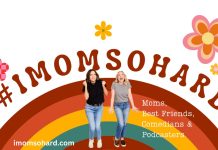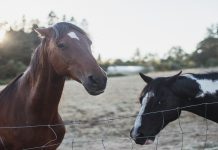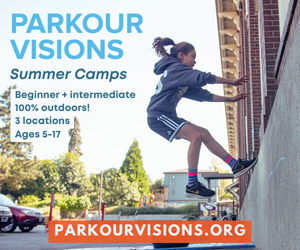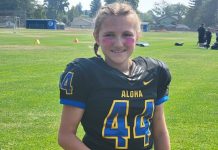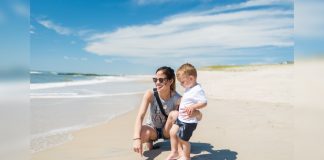Looking to start talking to your little ones about important — albeit tough — topics about their bodies (and bodies in general)?
Many of us, myself included, feel a sense of stress and pressure when it comes to talking to our children about topics such as their body parts, race, gender identity and expression, abilities, body size, and consent. We want to open a dialogue and be as inclusive as possible while knowing we are still learning about and can feel uncomfortable talking about these topics.
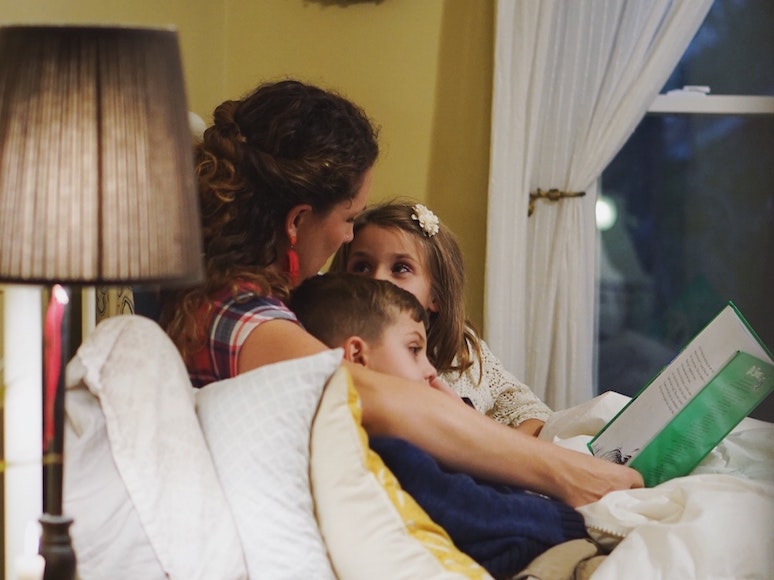
Books are a fantastic resource to support us in this because they can help give us language to use and introduce ideas and make these concepts more engaging and accessible to our little ones through illustrations.
As a therapist, especially one who specializes in eating disorders, I want to find books that are as inclusive as possible. I want to be able to see people of different identities or identity expressions, people with different abilities and language that is inclusive and without polarities (e.g. only talks about “boys” and “girls”).
Some of the key things I look out for when buying a book
- Representation: Who do I see in the pictures? Many books can have great messages but miss the mark with the illustrations. Are all of the people white in the book? Are all of the characters of the same relative size? Make sure there is depth in the presentation of the people in the story.
- Inclusive language: Some amazing books introduce anatomy and talk to children about genitalia. Unfortunately, many of them lean very heavy on the notion that “Boys have X” or “Girls have Y” and talk about sex and reproduction using limited explanations such as, “When a man and woman love each other and decide they want to have a baby…” (language from a popular book still sold today). Be sure to read through any book you are considering reading to your children first, and verify that it aligns with your values and beliefs.
- Plain language. One of the ways to make these topics more accessible and comfortable to talk about is to speak directly about the topic(s) at hand, rather than dressing it up or burying the lesson in colorful language and rhyming patterns. There is nothing shameful in talking about anatomy or fat bodies or a transgender person. We need to talk about how Black and Brown people are treated differently without trying to cover it up with glitter and whimsy. Look for books that are direct with a sense of curiosity and empowerment.
Need a little help with which books to choose? Here are my top picks for some of these difficult topics:
Best book to talk anatomy — from their armpits and eyes to their private parts
Your Whole Body: From Your Head to Your Toes, and Everything in Between!
Author:
This book walks you through beautifully illustrated pages that detail different body parts, including what they do and how they may be or look different for different people. There is a lot of language that alludes to different abilities related to various body parts, including someone who is Deaf or may not be able to use their legs and uses a brace, walker or wheelchair. They also do a great job describing genitalia in a way that feels very neutral and uses the words “Some people have…” instead of gendering them. It’s the best book I’ve found regarding inclusive illustration and direct (and correct) anatomical language.
Best book to introduce the concept of race and skin color
Our Skin: A First Conversation About Race
Author: Megan Madison & Jessica Ralli & Illustrator: Isabel Roxas
This is an awesome book — and one of 3 in this list written by Megan Madison and Jessica Ralli — that talks about skin color including what causes different tones to our skin, things we cannot know about a person purely looking at their skin, and how systems of oppression have been built upon the beliefs that certain skin tones are better than others. Throughout the book, there are different reflection questions to empower you, as the adult, and your children to think more critically and openly about ourselves and the world around us. And at the end, they have a terminology section that explains more about different concepts and words.
Best book on consent
Yes/No: A First Conversation About Consent
Author: Megan Madison & Jessica Ralli & Illustrator: Isabel Roxas
This is an incredible book also authored by Megan Madison and Jessica Ralli, introducing the idea of consent and touch. It does a great job talking about how we engage with and feel in our bodies, what consent is and how it can look, different ways people show they do not give consent and that consent may be withdrawn at any time. They normalize that sometimes we or others might be upset when we do not get someone’s consent and that this is okay while still validating the boundary someone is setting. My daughter, in particular, likes all the ways they show how you can say or show “No”.
Let’s Talk About Body Boundaries, Consent and Respect
Author:
This book has a similar tone to the other book but is a bit longer and more detailed. This might be better served for the older toddler (4-5). It gives more examples to what it looks like in different scenarios to ask for and give consent. The one downside of this book is that it uses a lot of “shoulds” when describing what a person “should” do instead of X example, which is something we try not to use in our home as it can be a bit shaming.
Best books about body neutrality and inclusivity
Bodies Are Cool
Author & Illustrator: Tyler Feder
This is one of my favorite books of the bunch. The illustrations are wonderful and the premise of the whole book is to hit on things we have all been taught there is a “right” way to look or present — whether it’s body hair, body size, the “smoothness” or clarity of our skin. It really emphasizes and shows people with so many different experiences and presentations — even illustrations that show someone who has had top surgery, which is not something I have come across in a book before. The images show people coming together in scenes like at a campground, pool or birthday party and really draw my daughter in. It has opened up a lot of conversation about what she sees in the pictures and how she understands bodies and identity.
Her Body Can
Author: Ady Meschke & Katie Crenshaw, Illustrator: Li Lui
This book is about empowering children that their bodies do not need to look a certain way or be born with certain parts to be worthy, deserving or capable of doing anything they want. It is a quick read with simple and powerful drawings that help call out instances many of us (and likely our kids) will experience or go through themselves.
Best books about gender identity and expression
Being You: A First Conservation about Gender
Author: Megan Madison & Jessica Ralli & Illustrator: Anne/Andy Passchier
Why do I love it? This is the 3rd book written by Megan Madison and Jessica Ralli. I think it was incredibly well done in opening the door to talking about gender identity, gender presentation, and biological sex. Like their other books, there are so many reflection questions that invite dialogue with you and your children, which is so helpful to take the learning deeper than the page. It has not only been great for our daughter but has opened up a lot of conversation with both my mom and mother-in-law to address things they were taught and implicit biases they are working through (something we are all facing) and has been amazing to watch it make those learning conversations more accessible for them to have with my daughter.
What Are Your Words? A Book About Pronouns
Author: Katherine Locke & Illustrator Anne/Andy Passchier
Why do I love it? This is an excellent book about someone who us unsure of their pronouns throughout the book and feels lot of pressure to find the “right answer” as to what they are. Throughout the story, they interact with different people with different identities and pronoun preferences. You get to experience with them the pressure and yet willingness to engage in the not-knowing process. It creates a sense of empathy for what some people experience regarding this aspect of their identity and teaches about many different identities and pronoun preferences. One of the cool things is that both books are illustrated by the same illustrator, Anne/Andy Passchier, so there is a lot of continuity in the imagery and messaging.
And finally, even though I don’t really think it fits in any of these categories directly, the book, “I Am Enough” by Grace Byers & Illustrated by Keturah A. Bobo is a fantastic story that is really about empowering kids to develop a positive core belief in that they are worthy of love, connection and celebration no matter what they do, how they look or who they are.
I hope this gets you started in doing the hard work that we all need to do to challenge our own thinking, get comfortable talking about hard topics, and open up the door to these conversations with your kids.
I am currently working on putting together a list of the top books for toddlers to talk about all things feelings so stay on the lookout for that in the coming months! And if you have suggestions for other books to include in this list or for the list I am working on, please add them in the comments. I am always looking to expand my reading list and know that the more tools we all have in our toolboxes, the better!


